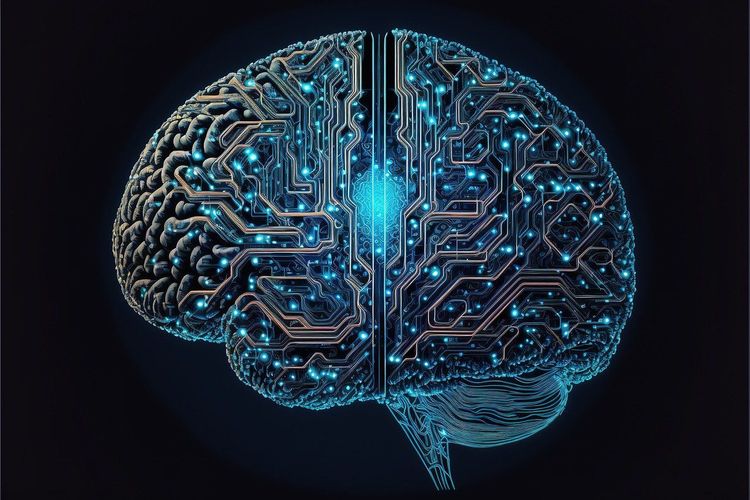When Rodney Brooks speaks on robotics and artificial intelligence, it's essential to pay attention. As the Panasonic Professor of Robotics Emeritus at MIT, Brooks has an impressive background that includes co-founding notable companies like Rethink Robotics, iRobot, and his latest venture, Robust.ai. He also led the MIT Computer Science and Artificial Intelligence Laboratory (CSAIL) for ten years beginning in 1997. Notably, he actively shares his insights and future predictions about AI on his blog, where he keeps a record of his accuracy.
Brooks, a recognized authority in the field, believes it might be time to temper the overwhelming excitement surrounding generative AI. While he acknowledges the technology's impressive attributes, he cautions that it may not be as powerful as many claim. "I'm not saying LLMs aren't significant, but we must carefully evaluate their capabilities," he emphasized in a recent conversation.
According to Brooks, the fundamental issue with generative AI lies in its limitations. Although it can perform a defined set of tasks well, it can't replicate the full spectrum of human abilities. "When a human observes an AI system completing a task, they often overgeneralize its capabilities and make inaccurate assessments of its competence," he explained. "Typically, they are overly optimistic, viewing AI performance through a human lens."
He stresses that generative AI is neither human-like nor equipped with human capabilities, making it misguided to attribute such traits to it. This misinterpretation results in people proposing applications that are not suitable. For instance, Brooks cited a recent suggestion regarding his warehouse robotics system at Robust.ai. Someone proposed using a large language model (LLM) for directing warehouse robots. However, he disagrees, arguing that such an approach would complicate operations. Instead, he advocates for connecting the robots to direct data streams from warehouse management software.
"When faced with 10,000 orders to fulfill in just two hours, efficiency is key. Language isn't going to enhance that; it will only hinder the process," he stated. "Our strength lies in advanced data processing, AI optimization, and strategic planning, enabling us to meet our shipping demands swiftly."
Brooks emphasizes the importance of tackling manageable problems when integrating robots into workflows. "We should focus on automating in environments where processes are already optimized. My company's success in warehouses is due to their controlled conditions," he elaborated. In warehouses, lighting remains consistent, and clutter is minimized to ensure safe navigation for both robots and humans.
Collaboration between robots and humans is crucial to Brooks. As such, his company's design philosophy centers around practicality rather than creating humanoid robots. Instead of humanlike features, their robots resemble shopping carts, complete with handlebars for human interaction in case of issues.
"While I've developed and delivered humanoid robots, the design of our current robots is optimized for functionality in warehouse settings," he noted. "The form factor allows for easy human intervention when needed."
Through his extensive experience, Brooks has come to prioritize accessibility and clear purpose in technological design. "Making technology understandable for users is essential for scalable deployment," he said. Furthermore, he highlights the importance of evaluating the business case and return on investment for any new development.
However, Brooks acknowledges the existence of challenging cases in AI that may take decades to solve. "Without clearly defining the parameters of AI deployment, it creates a backlog of unique cases that can take years to identify and resolve. Ironically, each of these solutions may require comprehensive AI capabilities themselves."
He warns against the common misconception fueled largely by Moore's Law, which suggests perpetual exponential growth in technology—an assumption that future advancements will mirror current leaps. Brooks points to the evolution of the iPod as an example. Although it initially doubled in storage capacity, if this trend had continued unchecked, we would have seen iPods with storage capacities of 160TB by 2017—a scenario that never materialized, as there simply wasn't a market demand for such excess.
Looking ahead, Brooks sees potential for LLMs to assist with domestic robots, especially for an aging population. However, he stresses that this avenue comes with its own complexities. "People believe that LLMs will empower robots beyond their current capabilities, but the real challenges lie in control theory and advanced mathematical optimization," he pointed out.
He envisions a future where robots equipped with language interfaces prove beneficial in eldercare by allowing individuals to interact with these machines more naturally. "While it may not be practical for warehouse robots to fetch individual items on command, such capabilities could greatly enhance interaction in home care environments," he explained.







